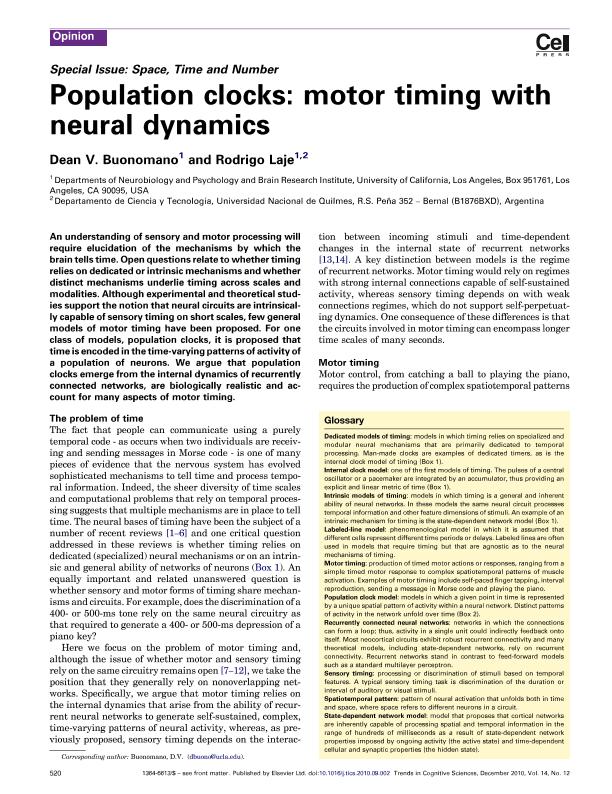Artículo
Population clocks: Motor timing with neural dynamics
Fecha de publicación:
12/2010
Editorial:
Elsevier Science London
Revista:
Trends In Cognitive Sciences
ISSN:
1364-6613
Idioma:
Inglés
Tipo de recurso:
Artículo publicado
Clasificación temática:
Resumen
An understanding of sensory and motor processing will require elucidation of the mechanisms by which the brain tells time. Open questions relate to whether timing relies on dedicated or intrinsic mechanisms and whether distinct mechanisms underlie timing across scales and modalities. Although experimental and theoretical studies support the notion that neural circuits are intrinsically capable of sensory timing on short scales, few general models of motor timing have been proposed. For one class of models, population clocks, it is proposed that time is encoded in the time-varying patterns of activity of a population of neurons. We argue that population clocks emerge from the internal dynamics of recurrently connected networks, are biologically realistic and account for many aspects of motor timing.
Palabras clave:
neuroscience
,
timing
,
neural dynamics
,
population clock
Archivos asociados
Licencia
Identificadores
Colecciones
Articulos(SEDE CENTRAL)
Articulos de SEDE CENTRAL
Articulos de SEDE CENTRAL
Citación
Buonomano, Dean V.; Laje, Rodrigo; Population clocks: Motor timing with neural dynamics; Elsevier Science London; Trends In Cognitive Sciences; 14; 12; 12-2010; 520-527
Compartir
Altmétricas




